Retas Water Solutions is a leader in pushing technologies for collecting rainwater and offering workable solutions for water scarcity. Retas Water Solutions assists homes and businesses in reducing their reliance on municipal water supplies and have also helped to restore groundwater reserves with their experience in designing and installing

C 56/21, 3rd Floor, Sector 62, Noida, Uttar Pradesh
Kategorie
C 56/21, 3rd Floor, Sector 62, Noida, Uttar Pradesh, 201309
O C 56/21, 3rd Floor, Sector 62, Noida, Uttar Pradesh
Misja
Millions of people around the world are impacted by the urgent problem of water scarcity. Traditional water sources are getting less trustworthy as climate change worsens. In response to this problem, rainwater harvesting has become a viable way to save water and replenish the groundwater table. Let's examine the idea of rainwater harvesting, how it might revolutionise water conservation, and the numerous ways it might be put into practise to properly recharge groundwater. Rainwater harvesting is the process of collecting and storing rainwater for later use. It entails gathering surface runoff, roof runoff, and other sources of precipitation, and channeling it into storage tanks or underground reservoirs. This collected water can be used for a variety of tasks, including home usage, irrigation, and groundwater replenishment.
Opis
How to Use Rainwater Harvesting to Recharge Groundwater:
Percolation pits: Excavated pits stuffed with coarse gravel or aggregate are known as percolation pits. They permit precipitation to permeate the soil and replenish the groundwater. These pits should be placed strategically far from contamination sources and in permeability-rich regions.
Recharge wells: Boreholes are dug into the ground to access the water table in recharge wells. These wells are used to collect rainwater that has been gathered from roofs or other surfaces so that it can seep into the aquifer and replenish groundwater supplies.
Infiltration Trenches: Permeable materials, such as gravel or crushed stone, are placed inside long, narrow ditches known as infiltration trenches. They give rainwater a way to reach the soil and replenish groundwater. Infiltration trenches can be made to hold a lot of water during times of high rainfall.
Rooftop rainfall Harvesting: This technique entails collecting rainfall from rooftops and diverting it into subterranean reservoirs or storage tanks. Utilising regulated percolation, the collected rainwater can be used to recharge the groundwater system.
Benefits of Harvesting Rainwater
Water conservation: We can greatly lessen our reliance on traditional water sources, such as rivers and underground aquifers, by collecting and using rainwater. This practise reduces the demand on the current supply systems and helps conserve limited water resources.
Cost Savings: Over time, installing rainwater harvesting systems can result in significant cost savings. Rainwater is free, and by using it for things other than drinking, we can use less expensively treated water.
Sustainable Landscaping: Rainwater tends to be purer and milder than tap water, which makes it perfect for nourishing plants and gardens. We may encourage water-wise gardening techniques and promote sustainable gardening practises by utilising collected rainwater for landscaping.
Rainwater harves
Percolation pits: Excavated pits stuffed with coarse gravel or aggregate are known as percolation pits. They permit precipitation to permeate the soil and replenish the groundwater. These pits should be placed strategically far from contamination sources and in permeability-rich regions.
Recharge wells: Boreholes are dug into the ground to access the water table in recharge wells. These wells are used to collect rainwater that has been gathered from roofs or other surfaces so that it can seep into the aquifer and replenish groundwater supplies.
Infiltration Trenches: Permeable materials, such as gravel or crushed stone, are placed inside long, narrow ditches known as infiltration trenches. They give rainwater a way to reach the soil and replenish groundwater. Infiltration trenches can be made to hold a lot of water during times of high rainfall.
Rooftop rainfall Harvesting: This technique entails collecting rainfall from rooftops and diverting it into subterranean reservoirs or storage tanks. Utilising regulated percolation, the collected rainwater can be used to recharge the groundwater system.
Benefits of Harvesting Rainwater
Water conservation: We can greatly lessen our reliance on traditional water sources, such as rivers and underground aquifers, by collecting and using rainwater. This practise reduces the demand on the current supply systems and helps conserve limited water resources.
Cost Savings: Over time, installing rainwater harvesting systems can result in significant cost savings. Rainwater is free, and by using it for things other than drinking, we can use less expensively treated water.
Sustainable Landscaping: Rainwater tends to be purer and milder than tap water, which makes it perfect for nourishing plants and gardens. We may encourage water-wise gardening techniques and promote sustainable gardening practises by utilising collected rainwater for landscaping.
Rainwater harves
Usługi w Noida, Indie
Usługi biznesowe 82 Agencja marketingowa 63 Agencja reklamowa 26 Konsultant edukacyjny 21 Konsultant marketingowy 18Similar places nearby
-
4.39 km

Ehllora RO Service
D 10/16 Shivshakti Apartment, Sector 71
Filtry i uzdatnianie wody, Punkt uzdatniania wody -
27.57 km
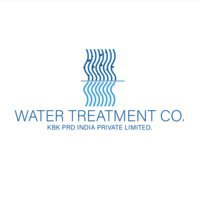
watertreatment company
17A, UFG, Wedding Souk Mall Sharda Niketan, Sarawati Vihar Pitampura, Delhi, 110034, India
Punkt uzdatniania wody -
31.4 km

Dabri- Palam Main Road, Dwarka, New Delhi – 110045, Delhi, India
Dwarka New Delhi – 110045, Delhi, India
Punkt uzdatniania wody -
41.76 km

Bioflow Industries Pvt Ltd
22/17/1/2 NATHU PUR TEHSIL RAI DISTRICT, HARYANA
Punkt uzdatniania wody -
41.81 km
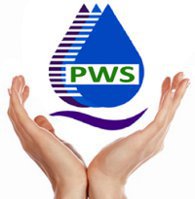
Gurugram
Market, MCG Rd, Kanhai, Sector 45, Gurugram, Haryana, Gurgaon, 122022, India
Filtry i uzdatnianie wody, Dostawca wody butelkowanej, Punkt uzdatniania wody -
46.26 km
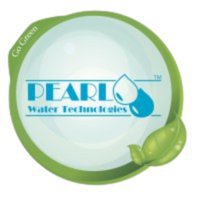
Pearl Water Technologies
12-D Sector 48, Gurgaon, Pearl Water Technologies
Punkt uzdatniania wody -
48.23 km
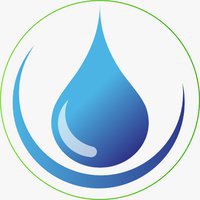
aquadrop water purifier
Sector 37d
Punkt uzdatniania wody -
53.23 km
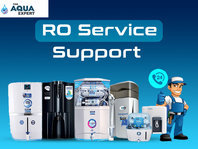
RO Service Center in Baraut
Shop No-3, near Astha Hospital, Naya Bazar
Filtry i uzdatnianie wody, Punkt uzdatniania wody -
56.66 km
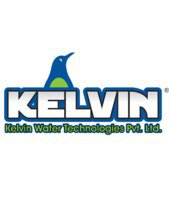
Kelvin Water Technologies Pvt Ltd
Plot No. 81, Sector 5, IMT Manesar
Punkt uzdatniania wody -
60.49 km

Haryana
Plot No: 499 & 500, Sector-8 IMT Manesar, Gurugram, Haryana-122050
Punkt uzdatniania wody -
74.07 km

The Aqua Expert | RO Service Near Me | RO Shop | RO On Rent
House No. 487, VPO - Barauda, Near Bhumiya Chowk, Tehsil, Budhana
Punkt uzdatniania wody, Filtry i uzdatnianie wody
Advertise with Yellow.Place!
Don’t miss a chance to attract more people to your location!
Submit your free listing